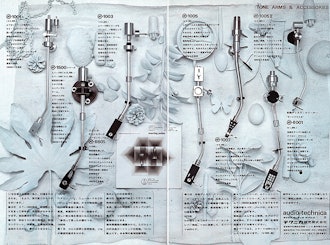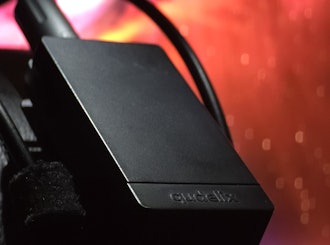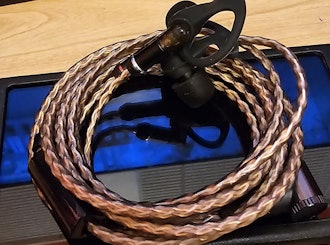Click to view our Accessibility Statement or contact us with accessibility-related questions















Showing 1 of 11 conversations about:

John-Booty
2
Jul 21, 2016
bookmark_border

kartiksathappan
97
Jul 21, 2016
bookmark_border
John-BootyI don't really avoid the title, many of my Apple EarPod friends call me one. I don't deny that there could be something there, I'm just not ashamed to say that I can't hear it!

indi_guy
163
Jul 21, 2016
bookmark_border
kartiksathappanYou won't unless you lock yourself in a soundproof room and listen critically with revealing system. The difference between Dacs and amps are very subtle too in a category. Major differences are between different kind of equipments. Like between OTL and SS amps. But those are flavours not to be said to definitely better than one another. So it's just the matter of choice.
PalawanGilles
4
Jan 16, 2018
bookmark_border
John-BootyFunny how I too had hit a wall with "audio quality". But I did find a way out.
Actually, I had hit two walls. I had also lost my interest in music (so much of the music that has been made since the 90's really isn't worth listening to). I recovered from my lack of appetite in music when Spotify appeared on the scene. This allowed me to delve into a wealth of material (old as well as new) and made me discover so many new gems. I regained my excitement for music. Downside is of course the limited resolution of the music (320 Kbps max when downloaded in "extreme quality"). Using a Chord Mojo, combined with a better headset has made the poor file quality appreciable. But truth be told, I still use Spotify merely to discover music, find new gems (and also to make playlists for background music suited for every mood).
As for my other wall, the audio quality...
I had started using a Digital Audio Player to take my music with me (I move around between locations a lot). The DAP plus headphone/IEM sounded a lot better than a smart phone but nothing compared to a great set of speakers. My DAP can read very high resolution files natively (DSD 128), yet the music I used to feed it was CD quality or MP3 320 Kbps. Out of curiosity, I started downloading free DSD sample files from various websites. And that's when it hit me. A great recording in studio master quality (DSD 64 or 128) sounds jaw dropping!!! What an eye opener! I instantly felt hyper excited again. Some classical tracks gave me goose bumps. My headphone (a 300 $ Philips Fidelio X1) sounded like the 3000 $ HiFiman HE-1000.
Since that revelation, I have stopped buying CDs, which, I now realize are also severely compressed compared to the original analog master tape. DSD allows for a much higher resolution (64, 128, 256 and now even 512 times the resolution of a 16 bit 44.1 KHz CD). I now believe that the CD format is totally unsuitable for classical music (especially orchestral pieces or choirs). Why? It's too damn tiring for your mind trying to "guess" the missing information in a compressed file.
When you say you can't "hear" the difference between a 256 Kbps file and "lossless" (and by that I believe you mean CD quality, which is as we often forget not lossless but severely compressed) you are not wrong. That is because your mind hasn't figured out yet what to listen for. But you DO experience the difference. Your mind "feels" the difference. Two ways to find out.
1) listen to lossless music for half an hour (live sound would be ideal, 24 bit or DSD would be super, CD quality will also work but will be less revealing). Now play the same music recorded in MP3 256 Kbps. Sounds disappointing, doesn't it? Like it has lost some of its colour. It's less exciting, less "alive", less inviting, less revealing.
2) try listening to MP3 music for an extended period of time and see how long it takes before you loose interest or develop listening fatigue. One hour, two hours? Now do the same with very high resolution music (reel to reel tape, DSD). It will take forever before you develop any fatigue or loose interest. Why? Because it's effortless for your brain to listen to it. There is no need to guess/reconstruct missing information.
Any one can "feel" the difference. Those who make a living writing about audio or making music know what to listen for and recognise the discrepancies immediately. Some have even found ways to describe it (for what it's worth, hehe :-)).
One caveat though. High resolution alone is meaningless. You also need a good performance and a great recording. High resolution doesn't add anything. It preserves the beauty of the recording. It's when all these elements come together that magic happens. My search right now is no longer for better gear. It's for better recordings. And yes, it matters most for acoustic music (classical music, vocal pieces, jazz) because these are the sounds our brains know best (your brain doesn't know what a synthesizer should sound like). But any music, any genre can benefit. And if that is news, many of the best recordings I have found so far are from the 50s and 60s (Jazz). And some of the worst... Well you know that.
Try and explore well recorded music in high resolution. You too will break through your wall with a big smile on your face.
Related Posts

storyboardtech
Finding your groove: getting into vinyl with Audio-Technica
I’d like to think that I could’ve been friends with the late Hideo Matsushita, founder of Japanese Hi-Fi powerhouse Audio-Technica. If I could, I’d travel back in time to 1960’s Tokyo, where a young Matsushita curated “vinyl listening sessions” at the Bridgestone Museum of Arts, exposing visitors to the sounds and possibilities of high end audio and the warmth of vinyl records. I imagine sitting with him in a mod coffee shop, listening to the stories of what he witnessed in those sessions, the conversations he had with visitors, and what ultimately motivated him to head back to his small apartment above a ramen restaurant and start an audio company of his own. In the histories I’ve read regarding AT’s humble beginnings, Matsushita’s motives seem clear. Produce high end audio at affordable prices, bringing audio excellence into spaces and to customers that simply didn’t have access to it before. His first two products, the AT-1 and AT-3 phono cartridges did exactly that, and...
Dec 6, 2023

monte543
This says "Estimated ship date is April 19." Is it still ok for me to make the purchase on the 20th or 21st?
Apr 16, 2024

Viltaria
Would Drop be able to provide power-adaptors (plugs) for those based in other regions (Euro, Oceania, Asia, etc)?
Apr 14, 2024

bipolarman
Would this be a good match (for my hard to drive) HFM HE560 Phones? My magni sound good but seems a bit underpowered. Any help please, Thanks.
Apr 12, 2024
Gsager
Is it best to use the high gain setting with 300 ohm headphones? And what is the cutoff between high and low gain settings and headphone impedence? Maybe a stupid question, but I'm new to this. Thanks.
Apr 12, 2024
Trending Posts in Audiophile

Simthaniel
Rigs
Modded headphones with qudelix at the core
When I received the Qudelix 5K, I had already modified a pair of Superlux HD-681 headphones. I previously soldered my own balanced connections to the drivers, providing multiple ways to connect and...
Apr 14, 2024

brothamike
A decent set of IEMs
I am in the midst of a 300 hour burn-in but, I will say I am enjoying how this set sounds so far. Before I received these which was btw late by a few weeks, I purchased a Sony/Kimber Kable MMCX...
Apr 12, 2024
merrick97
Should I exchange the PC38X for better headphones?
I bought the PC38X headphones FOR GAMING and they are great, but I have NO use for a Microphone since I don't do competitive gaming and I was wondering if there were better headphone options at a similar price without a headphone, where (presumably) more of the cost was put into making it sound better. I also find that my PC38X don't get quite as loud as I would like and I was wondering if a cheap amp like the iFi Go link would draw a little more volume out of my phones. https://www.amazon.com/dp/B0BN6MM822?psc=1&ref=ppx_yo2ov_dt_b_product_details I went with the PC38X since it was considered the best bang for buck headphones. I care most about using spatial apps like DOlby Atmos and DTS Headphone:X. Suggestions are welcome.
Apr 11, 2024

LostnAmerica
Sound Signature of the Grell Project.
Wondering what type of sound signature the Drop Grell project headphones will have or trying to attain. Any update would be appreciated.
Apr 8, 2024

Fabulous
Looking for a gaming/content audio setup
Hello! I'm looking for recommendations on audio setups. I'd be planning on using it mostly for gaming. Preferably I'd like a pair of large closed back headphones since I have a big head and jaw. I'd also like to hear myself through my mic with mic monitoring. As far as budget goes, I don't really have one. But under 600$ would be nice. I can go higher if needed. The audio setup would be connected to a high performance PC. Thank you in advance for any recommendations!
Apr 4, 2024

1plsd
$10 Drop Coupon Email not sent?
Trying to buy some gear off Drop for the first time. I was told I would receive an email with a welcome to drop $10 off promo. I never received that email. Drop was able to send me emails for my login token and email for Password update. But for some reason the $10 off coupon was never sent to me.
Mar 31, 2024

NMPacella
New here
Hello, I just joined, primarily for the audiophile products. Looking at purchasing the NHT C3 speakers for our new living room. Space is about 15 feet wide by 33 long and they will fire long ways. Space is just for general listening, music room with all equipment is downstairs, so hoping they will fill it with sound nicely. Cheers.
Mar 18, 2024



Good post! I think your attitude is exactly right. This just means you're not delusional. There's no research to indicate that anybody can reliably tell the difference between 256kbps AAC and lossless audio. (And yeah, I briefly went down the hi-res audio road myself... there's nothing there)
I stay away from the "audiophile" label myself because of the negative connotations.